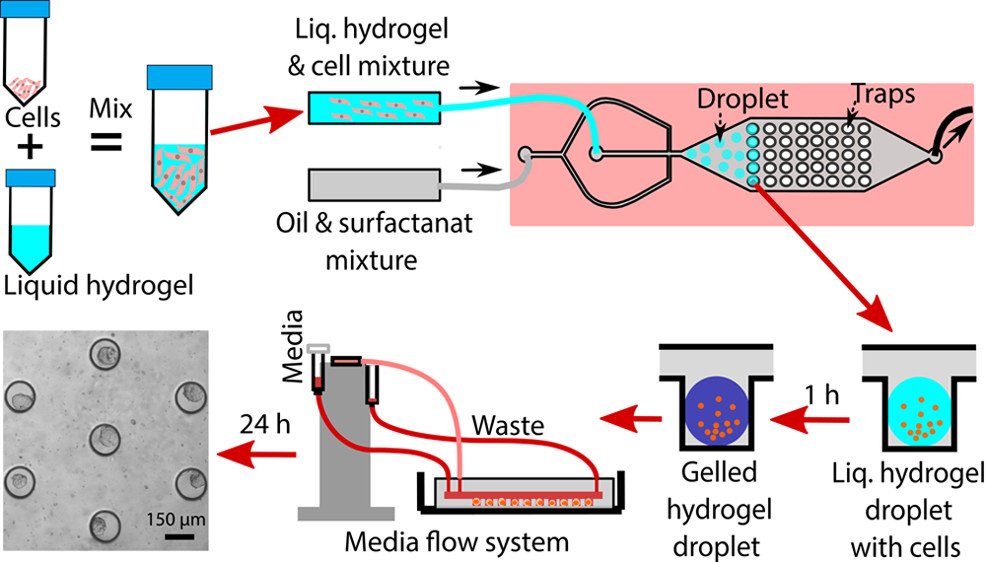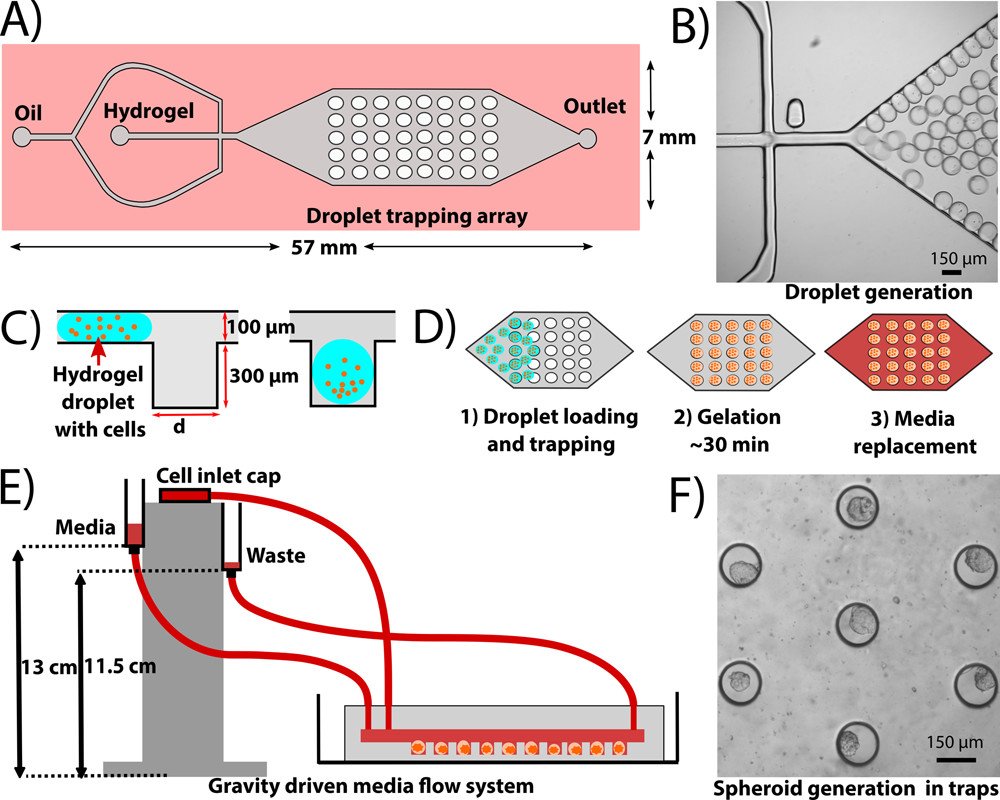
27 Aug A microfluidic platform for generation of 3D spheroids using a hydrogel scaffold
Cells live in a 3D environment and in-vitro studies that recapitulate this 3D environment can potentially better mimic the in-vivo conditions. Microfluidic chips and in particular droplet microfluidics have been promising in recent years for creating such 3D cell populations. For this week’s research highlight, we have selected a recent paper published in ACS Biomaterials Science in which a PDMS-based droplet microfluidic generator was employed to encapsulate cells in thiol–acrylate (TA) hydrogel scaffold droplets. The droplets were then trapped in a microfluidic device for on-chip polymerization and incubation.
“The findings from this study highlight an alternative approach to generate 3D spheroids incorporating an easy-to-use, inexpensive scaffold that can be used for high-throughput spheroid generation and drug screening. The growth and viability of MCF7 spheroids were maintained for 7 days by continuous media flow generated using a customized gravity-driven media flow system to eliminate the need for syringe pumps.“, the authors explained.

“Generation of 3D spheroids using a microfluidic droplet trapping array and thiol–acrylate hydrogel scaffold. (A) Top view of the droplet trapping array showing two inlets for carrying oil and aqueous hydrogel, a flow-focusing junction, the droplet trapping array, and a single outlet. (B) Hydrogel droplet generation at the flow-focusing junction. (C) Side view of the flowing droplet through the fluidic channel to isolate into the traps. Heights of the fluidic layer and traps are 100 and 300 μm, respectively, for both the 150 and 300 μm trapping arrays. (D) Protocol of spheroid generation begins with droplet loading and trapping; later, media replenishes oil after the gelation of the hydrogel droplets. (E) Schematic representation of gravity-driven media flow setup for the microfluidic droplet generator. (F) Brightfield image of MCF-7 spheroids on day 7 in the 150 μm trapping array.” Reproduced under Creative Commons Attribution 4.0 International License from Anowar H. Khan, Sophia P. Zhou, Margaret Moe, Braulio A. Ortega Quesada, Khashayar R. Bajgiran, Haley R. Lassiter, James A. Dorman, Elizabeth C. Martin, John A. Pojman, and Adam T. Melvin
“In the future, this system can be used for on-chip interrogation and evaluation of different biological systems such as the interaction between different types of cells and their effect on drug resistance.“, the authors explained.
Figures and the abstract are Anowar H. Khan, Sophia P. Zhou, Margaret Moe, Braulio A. Ortega Quesada, Khashayar R. Bajgiran, Haley R. Lassiter, James A. Dorman, Elizabeth C. Martin, John A. Pojman, and Adam T. Melvin ACS Biomaterials Science & Engineering Article ASAP DOI: 10.1021/acsbiomaterials.2c00491
Read the original article: Generation of 3D Spheroids Using a Thiol–Acrylate Hydrogel Scaffold to Study Endocrine Response in ER+ Breast Cancer


